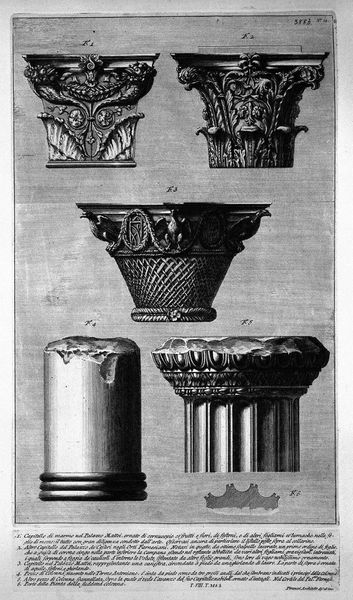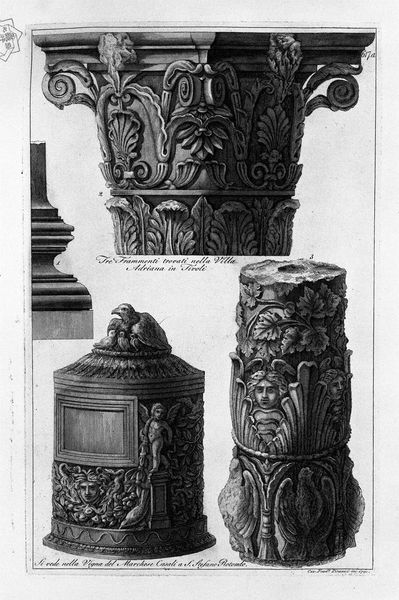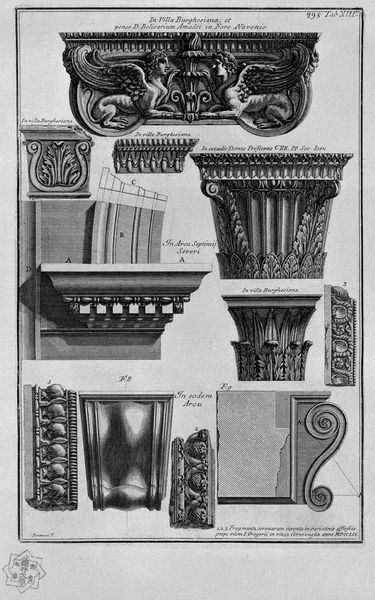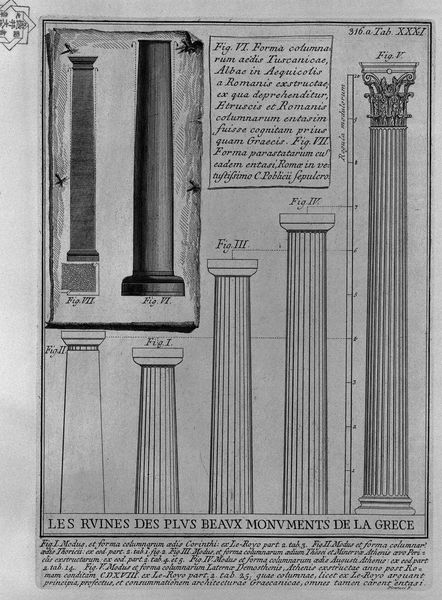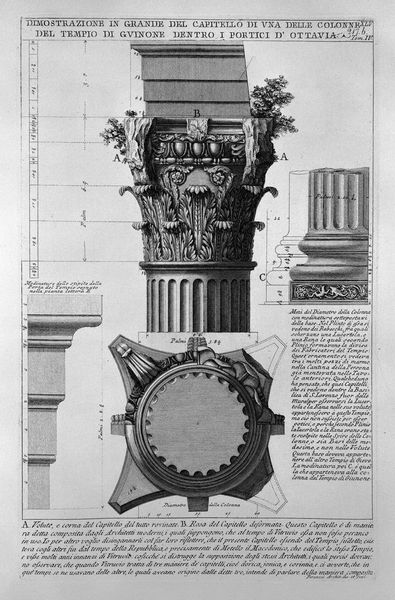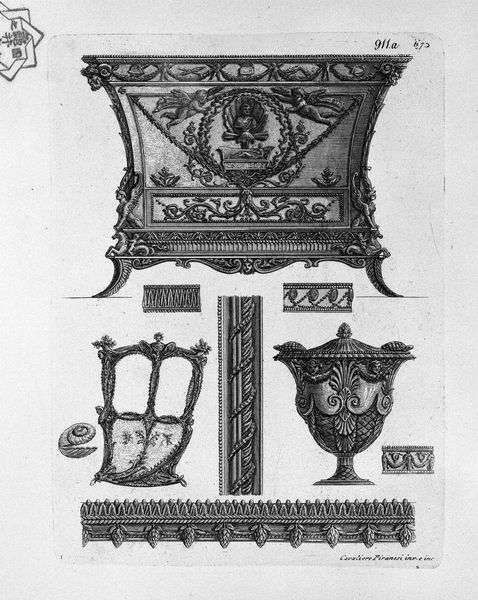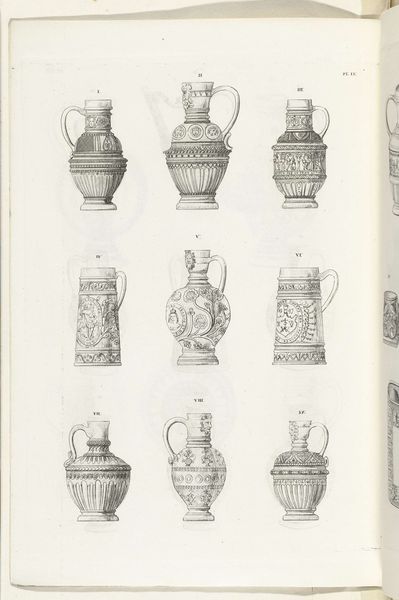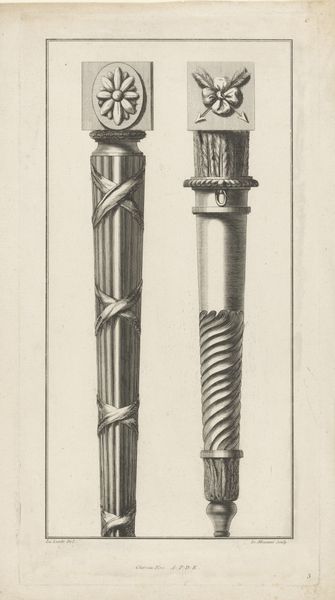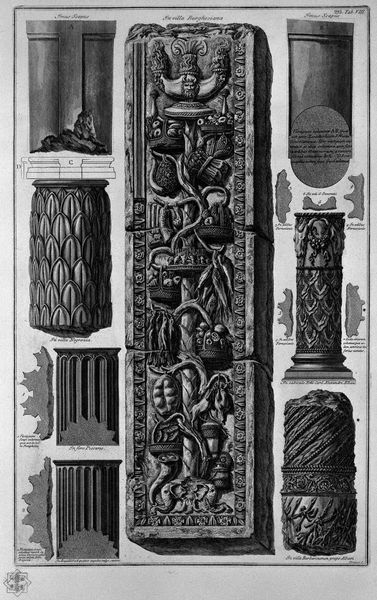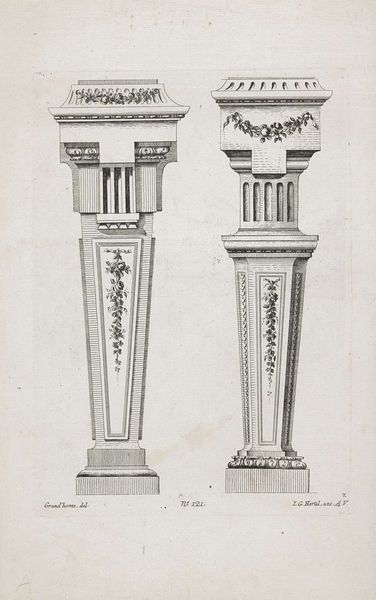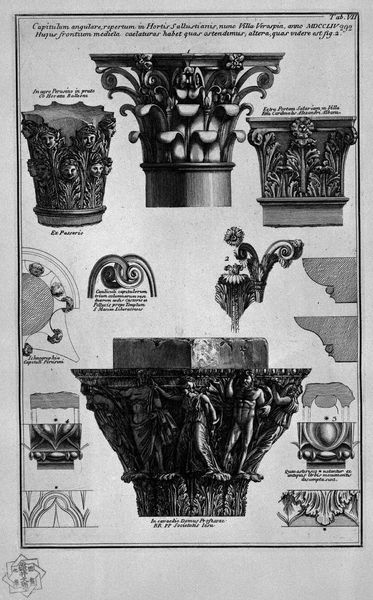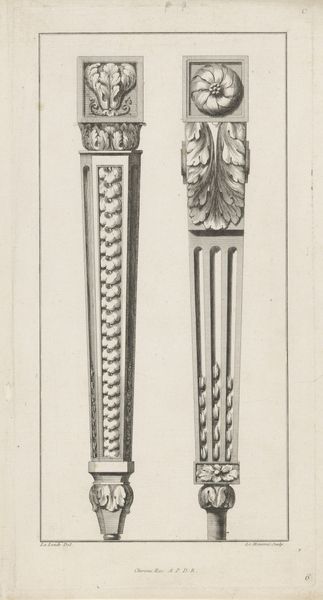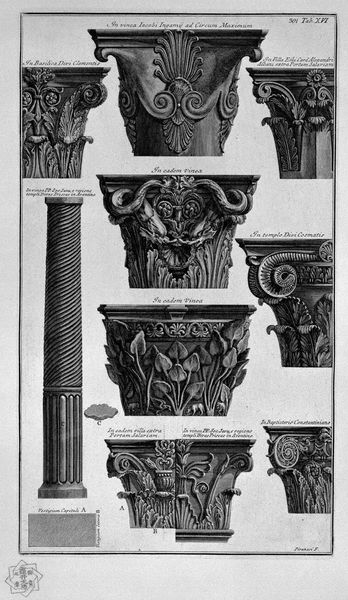
drawing, graphite, engraving, architecture
#
drawing
#
neoclacissism
#
sculpture
#
greek-and-roman-art
#
charcoal drawing
#
form
#
geometric
#
column
#
arch
#
line
#
graphite
#
graphite
#
engraving
#
pencil art
#
architecture
Copyright: Public domain
Editor: This is "Pieces of columns and capitals," an undated engraving by Giovanni Battista Piranesi. The precision of the line work really jumps out at me, particularly in depicting these architectural fragments. What can you tell me about the materials and production of such a print? Curator: With Piranesi, we always have to consider the labor involved in producing these images and their intended market. Engravings like these weren't just artistic expressions; they were commodities produced within a complex economic system. Think about the paper, the ink, the metal plates, the acid used to etch, and the skilled labor needed for each stage. Who was consuming these images, and what did they represent to them? Editor: I see what you mean. It’s easy to get lost in the aesthetics without considering the full picture. These weren't luxury items, necessarily, right? Curator: Exactly. While they represented the grandeur of classical antiquity, they were relatively affordable means of disseminating architectural ideas and promoting a particular vision of Roman history, not just for other artists and architects, but wealthy tourists on the Grand Tour, for example. We should consider these prints as products of a specific social and economic context, and how they reinforced certain power dynamics within 18th-century European society. Look at how these architectural fragments are presented, isolated from their original context. Editor: So, he is transforming ancient architectural forms into consumable objects… Did this mass production affect the perception of "original" classical architecture? Curator: Absolutely. By reproducing and distributing these images on a large scale, Piranesi, to some extent, democratized access to classical art and architecture, simultaneously shaping and mediating how these objects were understood and consumed. But, let's be mindful of whose interpretations were prioritized in this process. What does isolating details like this communicate? Editor: That’s fascinating! I never really thought about engravings in this way, as objects of production shaped by market forces and accessible to many. Curator: Indeed. Seeing art through the lens of materials, production, and consumption, can reveal a whole other layer of meaning.
Comments
No comments
Be the first to comment and join the conversation on the ultimate creative platform.
